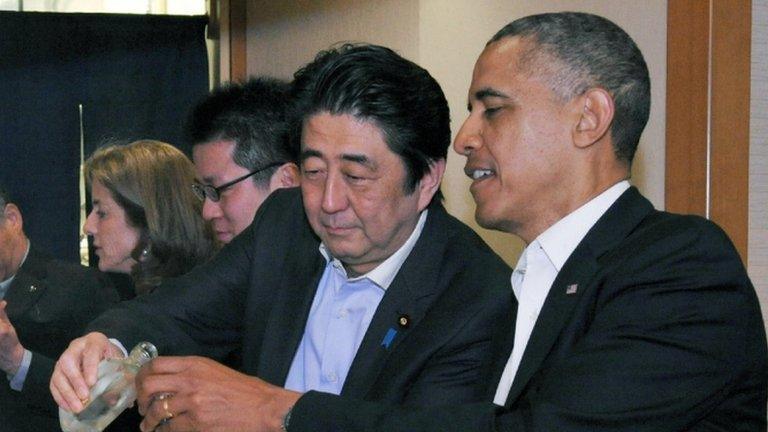US and Philippines begin annual military exercises
- Published
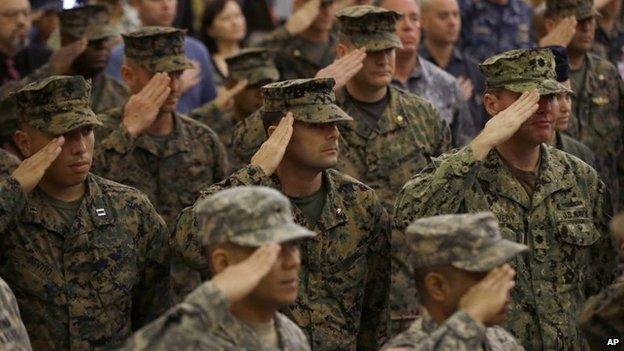
The annual exercises come as the US and Philippines move to deepen ties
About 5,500 troops from the United States and the Philippines have begun a military exercise, amid tensions between Manila and China.
The drills, called Balikatan (Shoulder to Shoulder), take place every year.
These exercises come a week after a military pact to increase the US troop presence in the country was signed.
Visiting Manila last week, US President Barack Obama pledged "ironclad" backing for the Philippines, which is engaged in a maritime dispute with China.
The two countries have competing claims over a number of islands and shoals in the South China Sea, such as Second Thomas Shoal and Scarborough Shoal.
The South East Asian nation has asked a United Nations arbitration tribunal to rule on the issue.
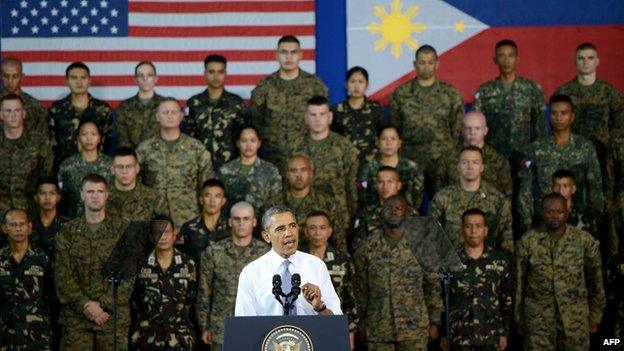
US President Barack Obama pledged strong military support for the Philippines during his visit last week
At Balikatan's opening ceremony, Filipino Foreign Secretary Albert del Rosario said it was necessary to deal with "aggressive" neighbours intent on "changing the status quo", without mentioning China.
He said the 10-day drills would focus on maritime capabilities. They would also include live-fire and maritime surveillance exercises, the Philippine military said.
Its public affairs office chief, Ramon Zagala, however, sought to play down Balikatan's significance, saying it was "not related to any current situation".
Instead, it was aimed at improving "tactical-level military proficiency" and enhancing US-Filipino co-operation, he said. The military exercise would also focus on humanitarian assistance and disaster response.
Military personnel from both countries will offer free medical, dental and veterinary care in Legazpi City, and build and repair infrastructure such as schools in Bicol.
As tensions with China have grown, the US and the Philippines have moved to increase co-operation.
Last week, Washington and Manila signed a deal allowing US troops better access to military bases, ports and airfields.
This exercise comes amid reports China has sent more ships to an area disputed with the Philippines.
Over the weekend, Philippine media reported the sighting of more Chinese vessels, external near Second Thomas Shoal, as the Philippine military air-dropped provisions to its troops stationed on a rusting vessel beached there.
Vietnam clashes with China over oil rig
Meanwhile, Vietnam has protested against a plan by China to move its first deep-water drilling rig into an area which Vietnam claims as its territory.
China's maritime safety authority announced on Saturday that the oil rig Haiyang Shiyou 981 would be drilling in an area located 120 nautical miles off the coast of Vietnam, external until 15 August.
It prohibited ships from entering within one mile of the rig.
On Sunday, Vietnam's foreign ministry spokesman Le Hai Binh insisted that this area belonged to them.
Any activity by foreign countries conducted in Vietnam's waters without its permission would be considered "illegal and worthless" and would be "resolutely opposed" by Vietnam's government, he said.
State oil and gas group PetroVietnam also sent a letter of objection to China's state-run oil company CNOOC, demanding they immediately pull out the rig.
In response, China on Monday expanded the prohibited area to three miles.
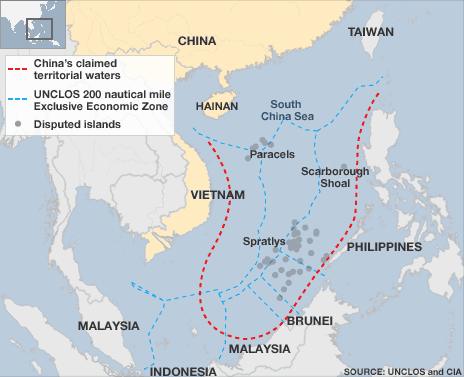
- Published28 April 2014

- Published7 July 2023
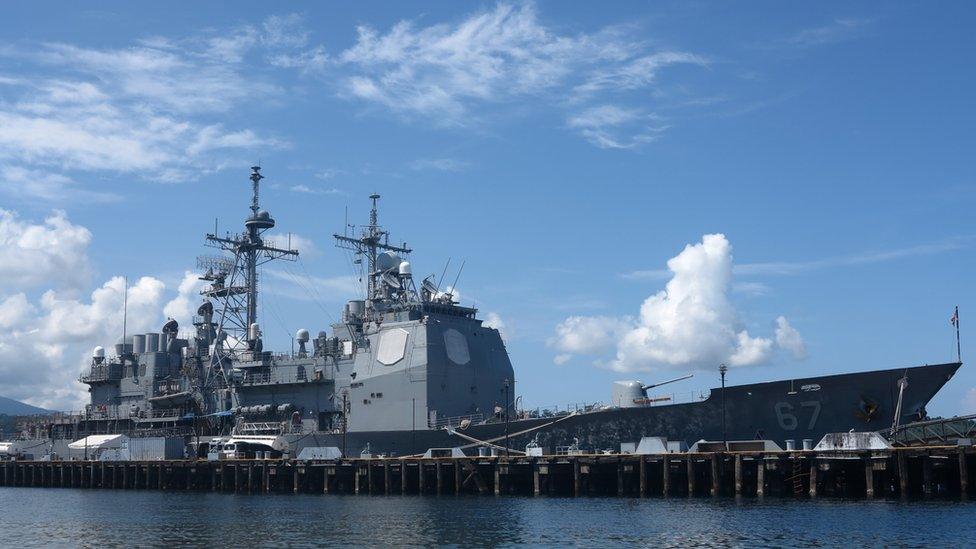
- Published31 March 2014
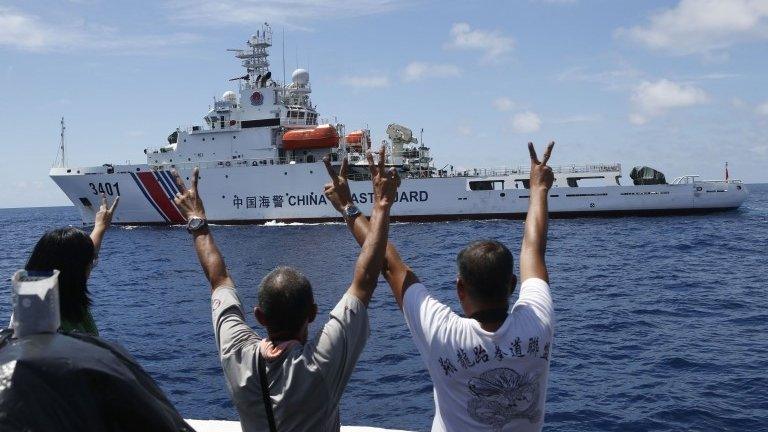
- Published11 March 2014
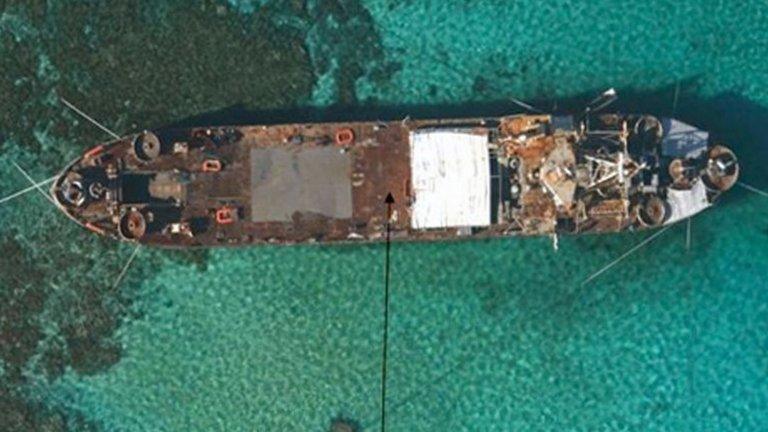
- Published23 April 2014
